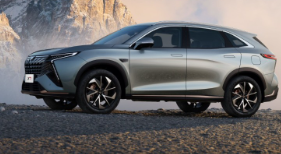As electric vehicle (EV) penetration nears 50% in 2025, the question of whether to switch from gas-powered cars has become more pressing than ever. With advancements in technology, expanded infrastructure, and evolving policies, 2025 marks a tipping point for many buyers—but the decision still hinges on practical factors. Let’s break down the key considerations to help you decide.
1. Why 2025 Is a Prime Year for EVs
Three major shifts make 2025 an ideal time to embrace electric mobility:
- Policy Perks: Many regions still offer critical incentives, including electric vehicle new energy vehicle purchase tax exemption and green license plates with no driving restrictions in major cities . These can slash thousands off your initial cost.
- Tech Breakthroughs: Battery tech has evolved—modern EVs boast longer ranges (often 400km+), and 800V high-voltage platforms enable 10-minute fast charging for 300km+ of range . Charging range anxiety is fading fast.
- Infrastructure Growth: Governments and private firms have ramped up charging networks; urban areas now have widespread coverage, and even smaller cities are closing gaps .
2. Who Should (and Shouldn’t) Buy an EV in 2025?
Ideal for:
- City Commuters: If you drive 50-100km daily, an EV’s low running costs shine—charging costs a fraction of refueling, and annual maintenance (no oil changes!) saves ~$500 .
- Policy Beneficiaries: Drivers in cities with driving restrictions or high license plate costs gain immediate value from green plates .
- High-Mileage Users: Those driving 20,000km+ yearly recoup the higher initial cost quickly via fuel savings .
Less Suitable for:
- Remote Area Dwellers: Sparse charging infrastructure in rural regions still poses challenges .
- Occasional Drivers: If you only use a car on weekends, the EV’s cost advantages won’t offset the upfront price .
3. Key Concerns Addressed
Cost: Initial Outlay vs. Long-Term Savings
EVs still cost more upfront, but 2025 models are more affordable than ever—especially mid-range options. The total cost of ownership favors EVs: electricity costs 70% less than gasoline, and simpler motors mean 50% lower maintenance .
Charging: Convenience for Most
Home charging (overnight for full range) works for 80% of daily needs. Public fast chargers now cover highways and urban hubs, making short trips stress-free . For long drives, planning via apps solves most issues.
Battery Longevity
Worries about battery decay are outdated. Most brands offer 8-year/160,000km warranties, with some extending to lifetime coverage . 2025 batteries retain 80% capacity after 10 years of use.
4. Your Next Step: Explore Kaiyi’s Electric Lineup
If you’ve decided 2025 is the year to go electric, Kaiyi offers accessible, reliable options tailored to real-world needs. Take the Kaiyi X3 Pro EV—a compact SUV that balances performance, space, and value:
- It delivers a 401km NEDC range, perfect for weekly commutes without frequent charging.
- Fast-charging capability refuels 20% to 80% in just 30 minutes, easing long-trip worries .
- With essential features like a 360° camera and smart infotainment, it avoids "over-configured" bloat that drives up costs .
To browse the full electric lineup, compare specs, and find your ideal EV, visit Kaiyi’s official website. Whether you need a city runabout or a family-friendly SUV, Kaiyi’s electric models combine 2025’s best tech with budget-friendly pricing.
Final Verdict
2025 isn’t just the year of EVs—it’s the year EVs finally fit most lifestyles. With policy support, better tech, and lower long-term costs, the answer to "Should you buy an electric car?" is a resounding "Yes" for most buyers. Start your journey at Kaiyi and drive into the electric future.

